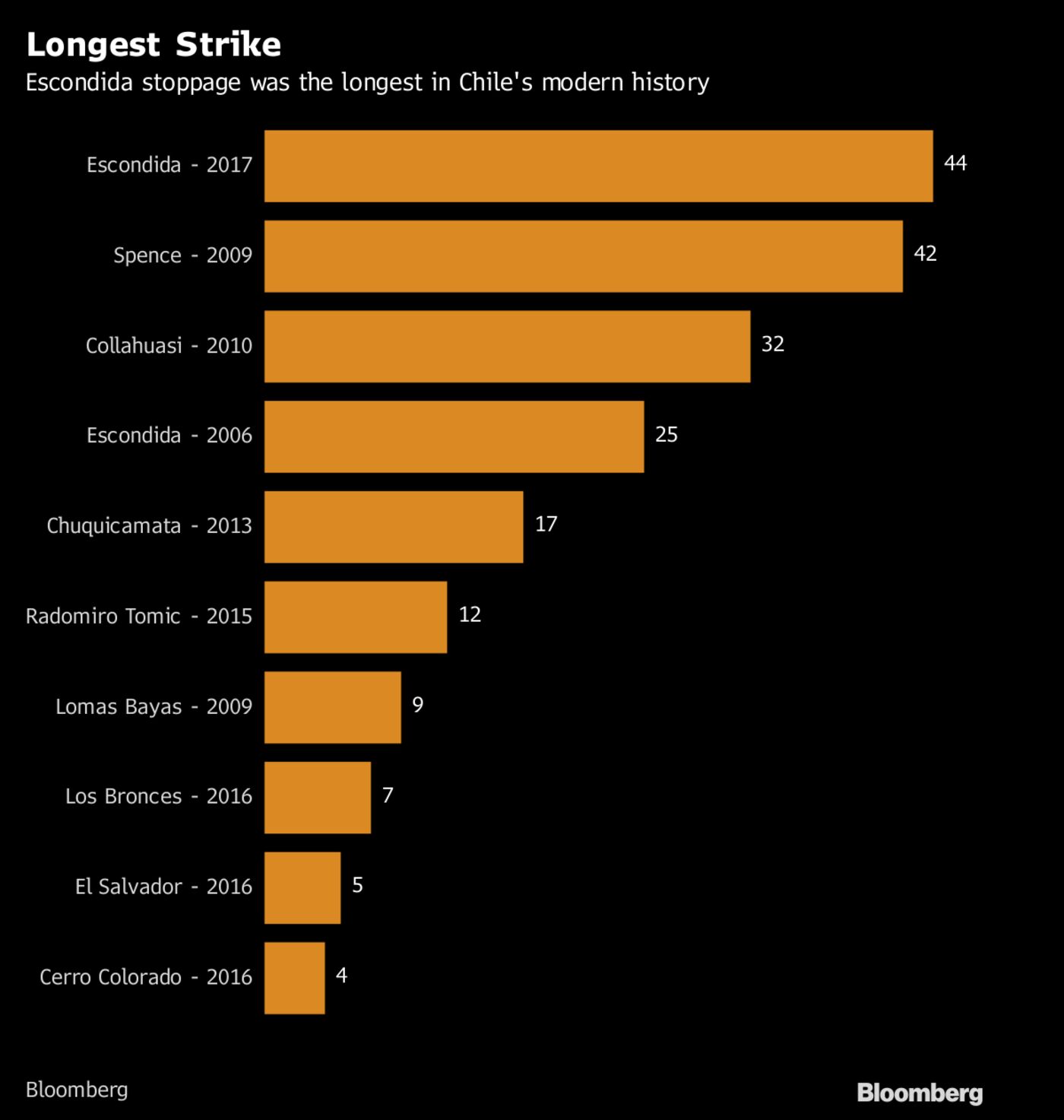Categories:
Base Metals
/
General Market Commentary
Topics:
General Base Metals
/
General Market Commentary
Copper Giant Chile Gears Up for Busiest Year Ever of Wage Talks
Copper forecasters are reassessing their projections as the top-producing country prepares for its busiest year ever for wage talks.
Under a new labor code and with higher prices inflating workers’ pay expectations, Chilean mines will negotiate contracts with 32 unions next year. That represents about three-quarters of the country’s copper output, or about one-fifth of world production. Globally, labor negotiations could trigger disruptions at mines producing about 40 percent of supply, according to Barclays Plc, which this week raised its price estimate.

While prospects of slower Chinese demand growth have sent copper back below $7,000 a metric ton in the past few weeks, supply is also constrained after years of cutbacks spurred by low prices.
That means any disruptions resulting from strikes could quickly tighten up the market -- as happened this year with stoppages at Escondida in Chile and Grasberg in Indonesia. If that occurs, prices could go back above $7,000 in the first half of the year, Bank of America Corp. analysts said last week.
“It’s going to be pretty tough,” Andrew Cosgrove, senior energy and mining analyst at Bloomberg Intelligence, said by telephone. "Copper price risks mainly come from the Chinese property sector, but the Chilean negotiations add a thicker layer of price support."
He expects supply to increase by 200,000 to 300,000 tons next year, signaling a fairly balanced market. But a repeat of this year’s strike interruptions would easily wipe out that increase. “Given how many negotiations are on, it could be even worse.”
While workers in Southern Copper Corp. mines in Peru returned to work on Tuesday after a 20-day strike, one union at Teck Resources Ltd.’s Quebrada Blanca mine in Chile were preparing to go on strike in what would be the first stoppage under the country’s new labor code.
Most of Chile’s largest mines face wage talks next year, although much of the attention will be on BHP Billiton Ltd.’s Escondida. The longest mine strike in the country’s modern history ended in March with no accord and an extension of the old contract until June 2018. Tensions ran high during a stoppage in which workers set up camp at the mine entrance, displaying dummies hanging from ropes representing executives and recording videos burning company letters.
An announcement by BHP in November to cut 3 percent of Escondida’s workforce spurred a 24-hour strike and threats of further action, with unions calling the layoffs an act of intimidation ahead of next year’s wage talks.
"Under the labor reform that came in last April, there is no downside for the employees during the negotiations," said Cesar Perez-Novoa, an analyst at BTG Pactual in Santiago. "Unions are empowered and this will influence negotiations. They are better prepared from a legal and economic point of view."

“Workers have made sacrifices over the last two years,” said Gustavo Tapia, president of Chile’s Mining Federation, which represents more than 20 unions from the largest mines. “Everyone can see that prices and production are higher, so the talk of crisis is no longer relevant.”
At the highest point of the last commodities cycle, juicy end-of-conflict bonuses were at the center of the talks. Now, negotiations are more likely to focus on benefits, Tapia said. Unions won’t be making unreasonable demands, he said, but they will ask for what they deserve after years of cost cutting.